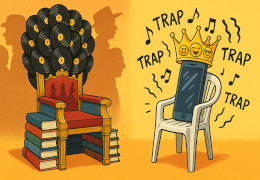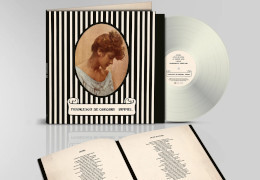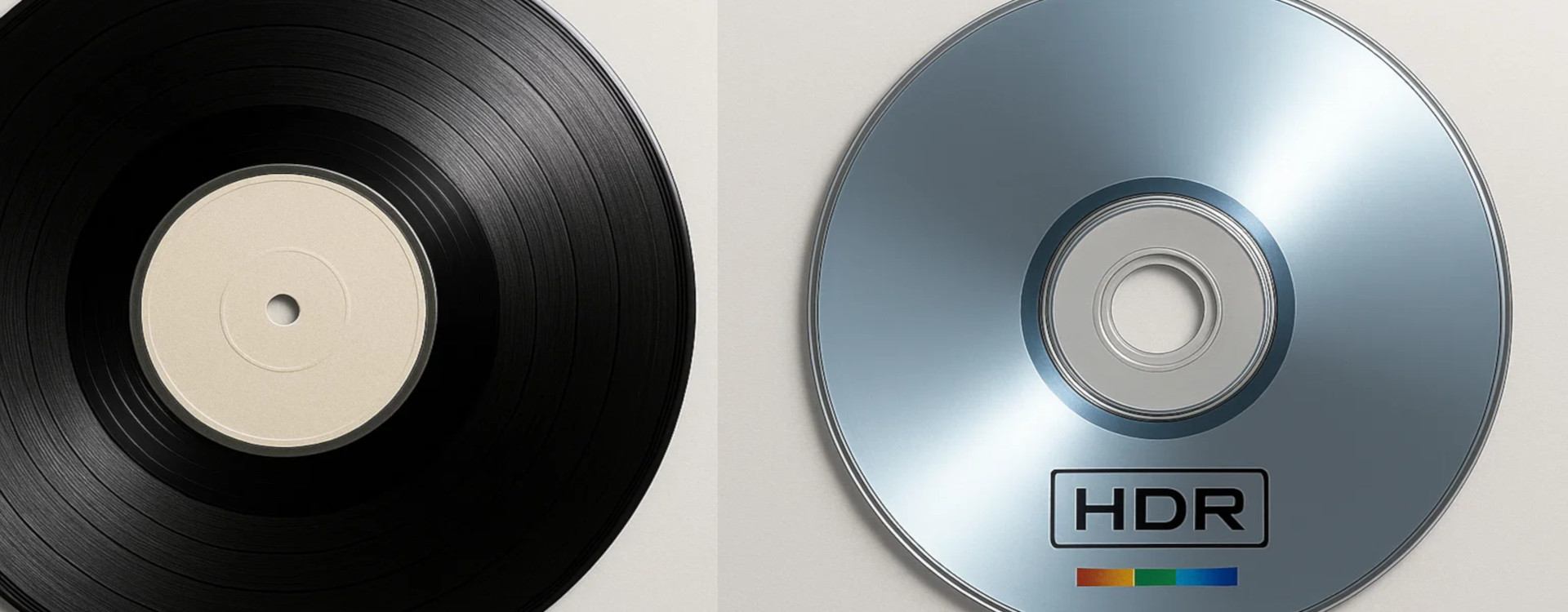Why Editions Aren’t All the Same: Mastering, Pressing Plants & Materials (Complete Guide)
Same album or film, different results: this guide explains—clearly but in depth—how mastering, pressing/authoring and materials change what you hear and see. You’ll find practical examples, home tests, myths to bust, a buying checklist, and a plain-English glossary.
The big picture
An “edition” is more than packaging: it’s the production chain. Three links shape final quality: mastering (the artistic/technical finish), pressing/authoring (turning the master into a physical disc), and materials (everything your hands and system interact with). If any link is weak, the experience suffers—even with the same title.
How a master is made (audio & video)
Audio: from mix to master
The mastering engineer balances dynamic range, EQ and loudness on the final mix. Small moves matter: a few dB of compression can sound more “radio-ready” yet flatten micro-contrasts. Good mastering preserves breathing room, transients and depth—without fatigue at normal listening levels.
Video: color grading & encoding
For 4K, teams define contrast, palette, and black/highlight handling (HDR10/Dolby Vision). Then comes encoding—choosing codec and bitrate suited to duration and native grain. Respectful grading plus careful encoding minimize banding and compression artifacts.
From master to medium: vinyl vs 4K
Vinyl: lacquer, plating, press
The source (tape/file) is cut to lacquer (or DMM). The lacquer is plated to create a mother and then a stamper that physically presses grooves into PVC. Fresh stampers and accurate centering reduce noise and wow. Typical defects: warps, off-center holes, surface noise.
4K: disc authoring
Authoring sets bitrate, codec, HDR metadata and disc structure (menus/extras). Long, grainy films need generous bitrate; otherwise you risk macro-blocking or banding. Editions can vary by region—audio tracks, subtitles and even encoding decisions.
What you actually hear/see (practical examples)
- Pianissimos & reverb tails (audio): heavily compressed masters “breathe” less. Test quiet intros and fade-outs.
- Dark scenes & skies (video): tight authoring reveals banding; careful grading keeps gradients smooth.
- Stereo image & punch: well-cut vinyl has stable imaging and taut bass; weak pressings add noise and instability.
- Cinematic grain: too much DNR makes faces “waxy.” Respectful grain management keeps natural texture.
Myths to bust
“180g = guaranteed quality”
No. Weight aids flatness, not mastering/cutting quality.
“Steelbook = better video”
No. It’s a nicer case; content quality depends on mastering/authoring.
“Higher bitrate always wins”
Often true, but codec efficiency and master quality matter too.
“Newer = better”
Not always. Some reissues compress more or apply heavy DNR.
Recommended home tests
Audio (vinyl/CD)
Use three passages: very quiet intro, dense section, fading outro. Compare pitch stability (centering), instrument separation, and fatigue at moderate volume.
Video (4K)
Test two dark scenes, one bright wide shot, and a sky gradient. Look for: banding, shadow detail, highlight clipping, and “waxy” faces from over-smoothing.
System setup
Vinyl: clean records and set VTF/anti-skate properly. 4K: accurate picture mode, disable “soap-opera” motion effects, use sensible HDR presets or a basic calibration.
How to pick the right edition (operational checklist)
1) Label & year
Often hint at the master used and editorial standards. Reissues vary widely.
2) Declared mastering
Look for remaster notes, source (tape/digital), cutting type (lacquer/DMM), grading/HDR details.
3) Pressing/Authoring
Reputable plant? Fresh stampers? For 4K: robust bitrate and minimal macro-banding.
4) Technical reviews
Seek comments on dynamics, noise floor, banding, grain handling—not just “like/don’t like.”
5) Useful packaging
Anti-static sleeves, lined inners, booklets, secure hubs (to prevent scuffs).
Buying scenarios (what to get, when)
- Chasing “closest to the original” sound: pick editions known for wide dynamics and respected cuts; avoid aggressively compressed remasters.
- Prioritizing artifact-free video: look for 4Ks with healthy bitrate and smart HDR tone-mapping; beware “bonus-packed” discs that squeeze the feature.
- Solid quality on a mid budget: transparent labels with good track records—clear mastering notes beat hype stickers.
- Collecting: choose color variants/steelbooks after confirming the same technical master/authoring as the best-rated edition.
Common mistakes to avoid
- Buying solely for artwork or vinyl weight.
- Confusing “louder” with “better.”
- Using harsh TV presets (over-sharp, motion smoothing) that skew perception.
- Ignoring logistics: poor shipping or storage can ruin a good pressing.
Care & longevity
Vinyl
Regular cleaning (carbon fiber + mild solution), anti-static inners, vertical storage away from heat.
4K/BD
Handle by edges, store away from scratches and sunlight, periodically check for “disc rot.”
System
Check stylus wear and alignment; update 4K player firmware; basic HDR calibration for your TV.
Questions worth asking your retailer
- Which master was used? Any official notes?
- Which pressing plant or authoring house handled this run?
- Is this a recent run or a repress from the same stamper?
- Are there regional variants with different audio/subs/bitrate?
- What’s the return policy for defects (warp, centering, video issues)?
Quick FAQs
Does 180g vinyl always sound better?
No. It helps stability and flatness, but mastering and cutting quality matter far more.
Does a steelbook improve video?
No. It’s a premium case. Video quality depends on the master, grading and disc authoring.
Why can a 4K look “darker”?
HDR redistributes brightness; a calibrated TV is essential. Different grading changes perception.
Glossary (English)
- Bitrate (video/audio)
- Data per second (e.g., Mbps). Higher usually means more detail/fewer artifacts—codec efficiency and mastering also matter.
- Codec
- Compression/decompression method (e.g., HEVC/H.265 for 4K; AAC/PCM/FLAC for audio). Efficient codecs keep quality high at lower bitrates.
- Banding
- Visible “steps” in gradients (skies, shadows) where smooth transitions should be—often from low bit depth or heavy compression.
- Chroma subsampling
- Reducing color resolution relative to luma (e.g., 4:2:0) to save data; usually fine, but can affect fine color edges.
- HDR (High Dynamic Range)
- Wider brightness range and color volume than SDR; needs an HDR-capable, calibrated display.
- HDR10 / Dolby Vision
- HDR10 uses static metadata; Dolby Vision adds dynamic per-scene/shot metadata for finer tone control on compatible TVs.
- Tone-mapping
- How a TV/player maps HDR brightness to panel capability; good tone-mapping preserves shadow and highlight detail.
- Grain management
- Handling of film grain; respectful settings keep texture, excessive DNR erases detail and looks “waxy.”
- Noise Reduction (DNR)
- Removes random noise; overuse softens detail and causes smearing/ghosting.
- Mastering (audio/video)
- Final polish before manufacturing: levels, EQ, compression (audio); grading, contrast, encoding (video).
- Dynamic Range (audio)
- Gap between the quietest and loudest parts; more range feels more “alive,” over-compression flattens impact.
- Loudness
- Perceived volume; excessive loudness reduces dynamics and leads to fatigue.
- Clipping
- Signal exceeds max level and “cuts,” creating harsh distortion—often a mastering issue.
- EQ (Equalization)
- Balancing bass/mids/treble; tasteful EQ clarifies, heavy-handed EQ changes character or hides flaws.
- Lacquer / DMM (vinyl cutting)
- Lacquer: soft disc cut by lathe then plated. DMM: direct metal cut to copper. Engineer skill matters more than method label.
- Stamper (vinyl)
- Metal mold that presses records. Fresh, well-made stampers yield cleaner pressings; worn ones add noise/lose detail.
- Runout / Matrix (vinyl)
- Etched codes near the label identifying cut, engineer and batch—handy to verify your version.
- Centering (vinyl)
- Spindle hole alignment; off-center pressings cause audible pitch “wobble.”
- Warp (vinyl)
- Disc not perfectly flat; mild warps are common, severe ones affect tracking and sound.
- Wow & Flutter (vinyl/tape)
- Slow (wow) or fast (flutter) speed variations during playback; heard as pitch instability.















